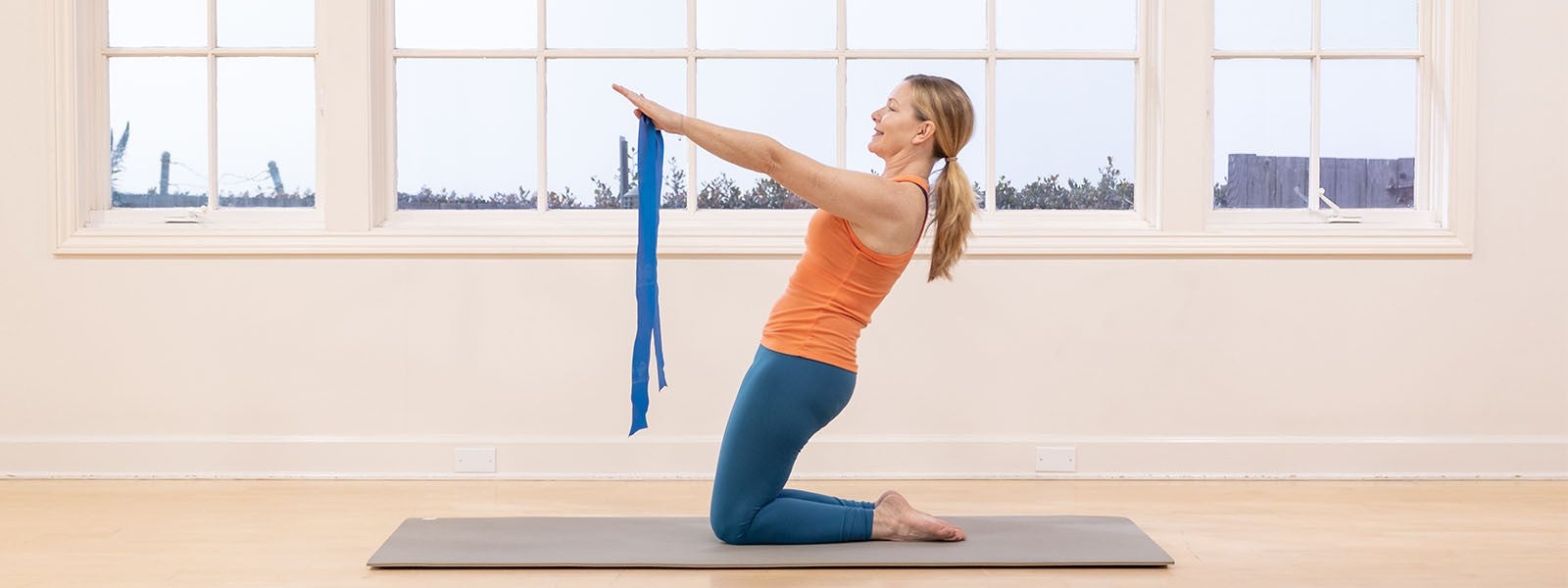
Pilates for Tight Shoulders: Finding Relief
While a professional massage (remember those?) may bring some momentary relief, thinking differently about shoulder discomfort and incorporating some good shoulder practices into your workout or daily routine can set your shoulders free.
"Shoulders get tight for so many reasons. Poor posture, how we manage stress, and a lack of awareness in how we move and carry ourselves can all contribute to tight shoulders," says Regina Santos, a Los Angeles, California-based Pilates instructor and life coach.
Pilates is uniquely suited to address all of these issues. According to Santos, "Pilates releases tension and is fundamentally about returning us to proper alignment, ensuring we move from our center, waking up the 'sleepy' underworked' mechanisms while calming down the overworked ones. In addition, Pilates helps us build more awareness of our bodies and our minds so that we can self-regulate and bring ourselves back to balance."
Avoiding "Chicken Head" Posture
One of the biggest culprits of shoulder pain is forward head posture, in which the chin juts out and the head is too far in front of your shoulders (also known, attractively, as 'chicken head'). As our heads weigh anywhere between ten and 13 pounds, that places a lot of stress on our neck and shoulders.
"In today's world, our heads are forward quite a bit from looking at screens, looking at phones, and carrying shoulder purses on one shoulder," says Amy Havens, a Santa Barbara, California-based Pilates instructor. "Unsurprisingly, most of us have a little bit of neck and shoulder tension," she adds.
Havens points out that the base of the neck muscles are located between the shoulder blades, which is why neck and shoulder issues are interrelated. Havens has found that doing some stretching or release work for the neck often results in a release for the shoulders. For example, in people with head forward posture, sometimes just moving the neck in a new way, for example by gliding the head forward and back to produce a temporary double chin, will release tension all the way down into the shoulder region.
Other movements that are beneficial include tilting or turning the head from side to side or lifting the chin up and down (known as a "Cervical Nod"). Shoulder shrugs and circles are also a good way to release tension. These simple movements can help us become more aware of our habitual posture and, if necessary, make changes for optimal function. "The shoulder is more efficient when it's in a lowered position, not up by our ears," says Havens.
Strength Training: The Missing Piece
It's not enough to just stretch. We need to strike a balance between stretching and strengthening, says Havens. "Usually, the tight muscles are the weak ones," she says.
Brooklyn, New York-based Pilates instructor Cara Reeser, who created a series on Upper Body Health for Pilates Anytime, notes that while we may crave a back rub when we feel upper body tension, doing some gentle strengthening that stimulates the natural contraction and release of the muscles is beneficial for relieving tension. In addition, strengthening the muscles of the neck and the shoulders (especially the "sleepy" or smaller muscles Santos mentioned earlier) can help avoid future neck and shoulder issues.
At home, that might look like any of the various Chest Lift exercises, which work the deep neck muscles in flexion, or Swan, which strengthens the muscles that extend the cervical spine. You can use a Theraband or light arm weights to perform overhead presses, lat pulls, and rows that target the muscles of the shoulder.
Havens is a fan of using a hand or tea towel, folded in thirds to make it skinny, and held lengthwise at chest level with the arms extended. Pulling the towel taut (Havens calls this action "tauting the towel") teaches us how to stabilize the head on the shoulders in good alignment. "This action works the muscles on the sides of the shoulders, down the back, and the spot between the shoulder blades where neck muscles start," she says.
In Studio Shoulder Savers
In the fully equipped Pilates studio, Santos gravitates to these shoulder-opening and strengthening exercises:
- The arm and leg series on the Barrels , smaller curved apparatuses that elevate and support the hips or the upper back, depending upon the exercise. Arm circles or scissoring movements, with or without small hand weights, facilitate range of motion and strengthen the small supporting muscles of the shoulder girdle. The leg series, in which the upper arms act as stabilizers, is good for practicing external rotation of the shoulders and maintaining an open, broad chest (important for breathing deeply!).
- On the Wunda chair, unilateral side press downs and the side-bending Mermaid exercise improve posture, teach body and kinesthetic awareness (proprioception), and wake up the lats and the posterior chain.
- Chest Expansion (which can be performed on various apparatuses such as the Ped-O-Pul, as well as standing with or without hand weights), creates space for breathing deeply and connecting the back and front sides of the body.
With some care and attention, our shoulders can start to descend to their rightful place in relation to our ears. What are your favorite moves for attaining upper body health? Let us know in the comments below.
Comments
No comments yet. Be the first!

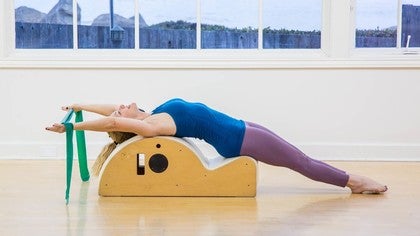
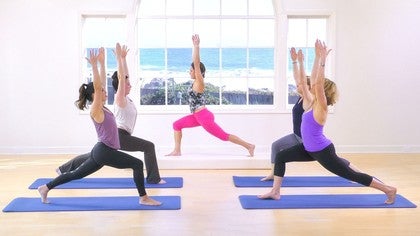
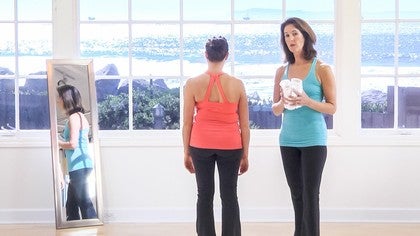
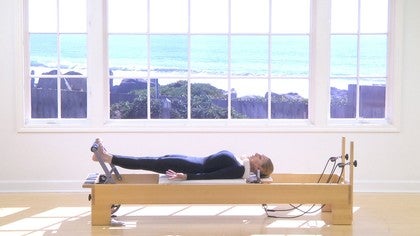
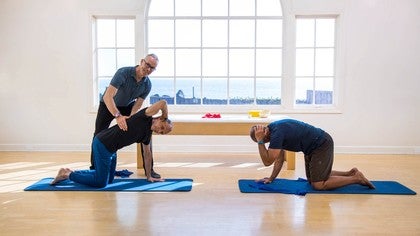
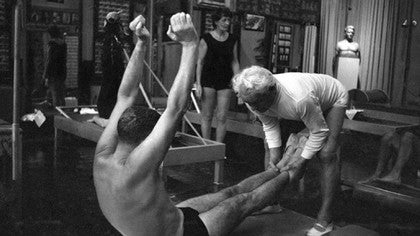
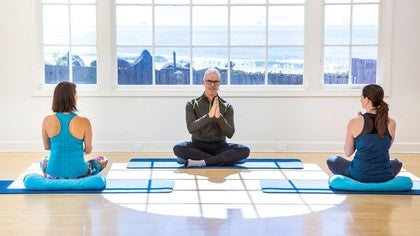
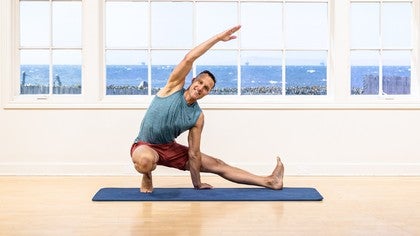

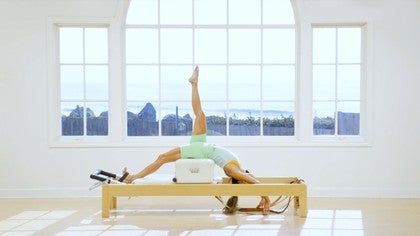


You need to be a subscriber to post a comment.
Please Log In or Create an Account to start your free trial.